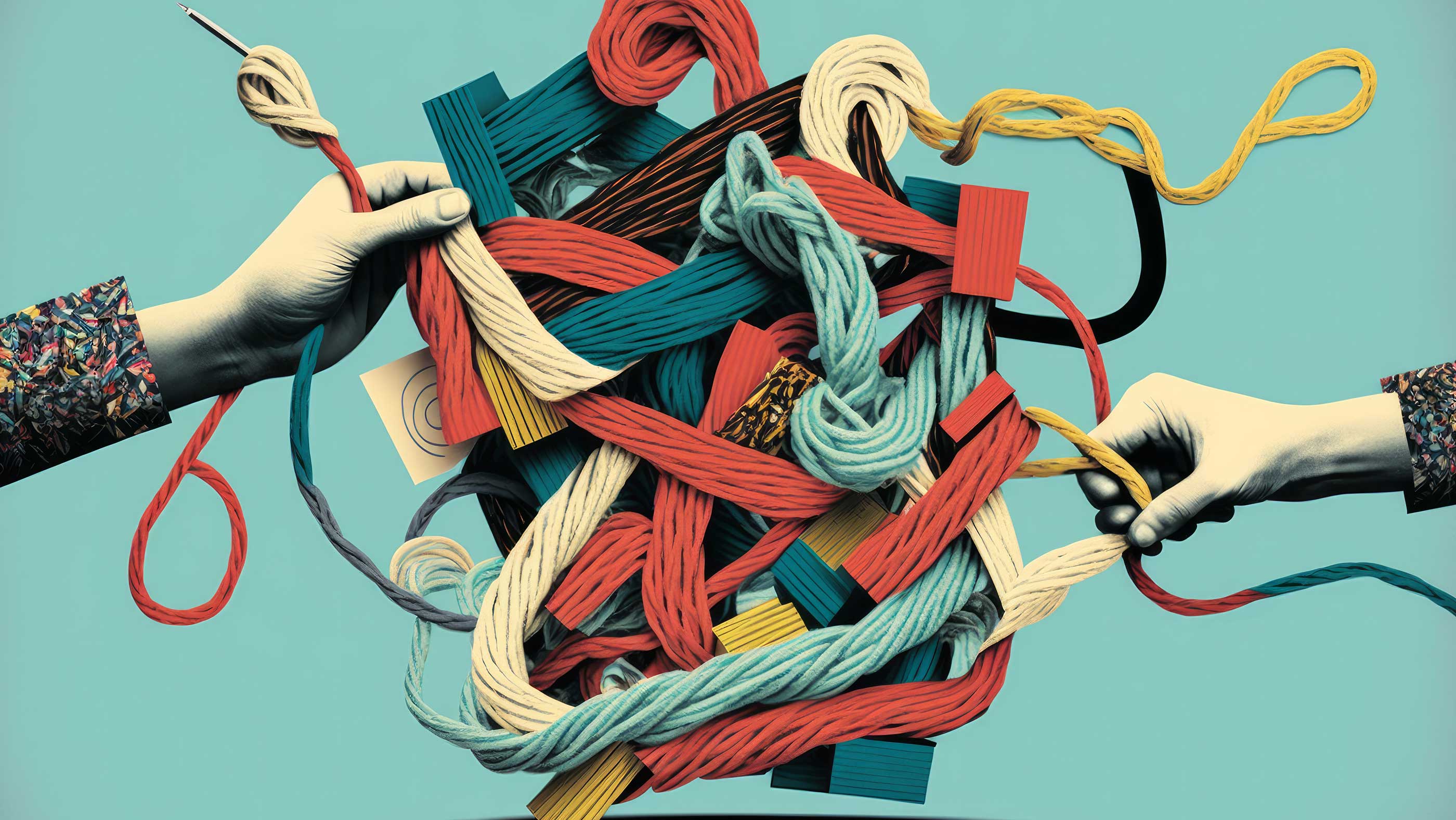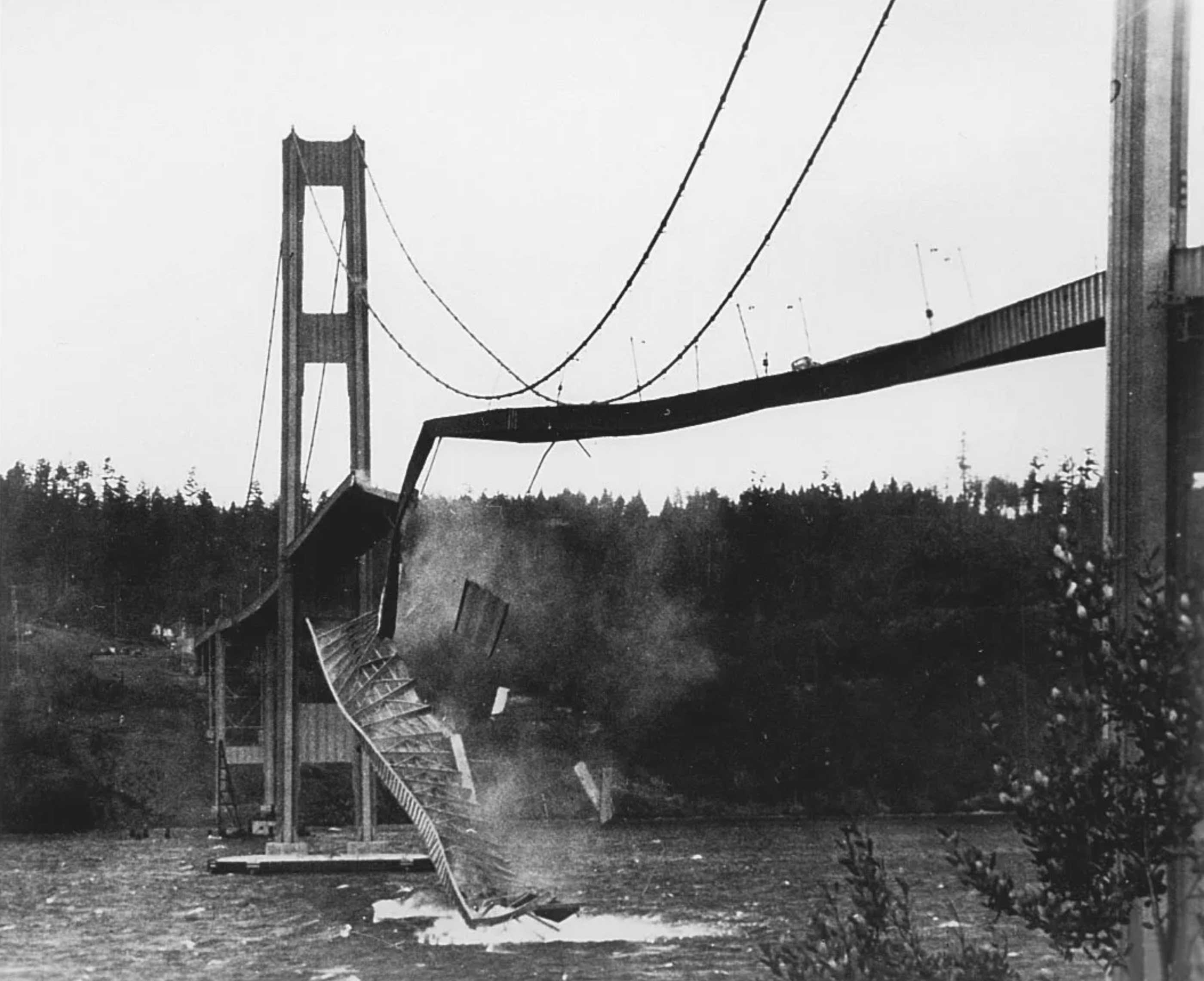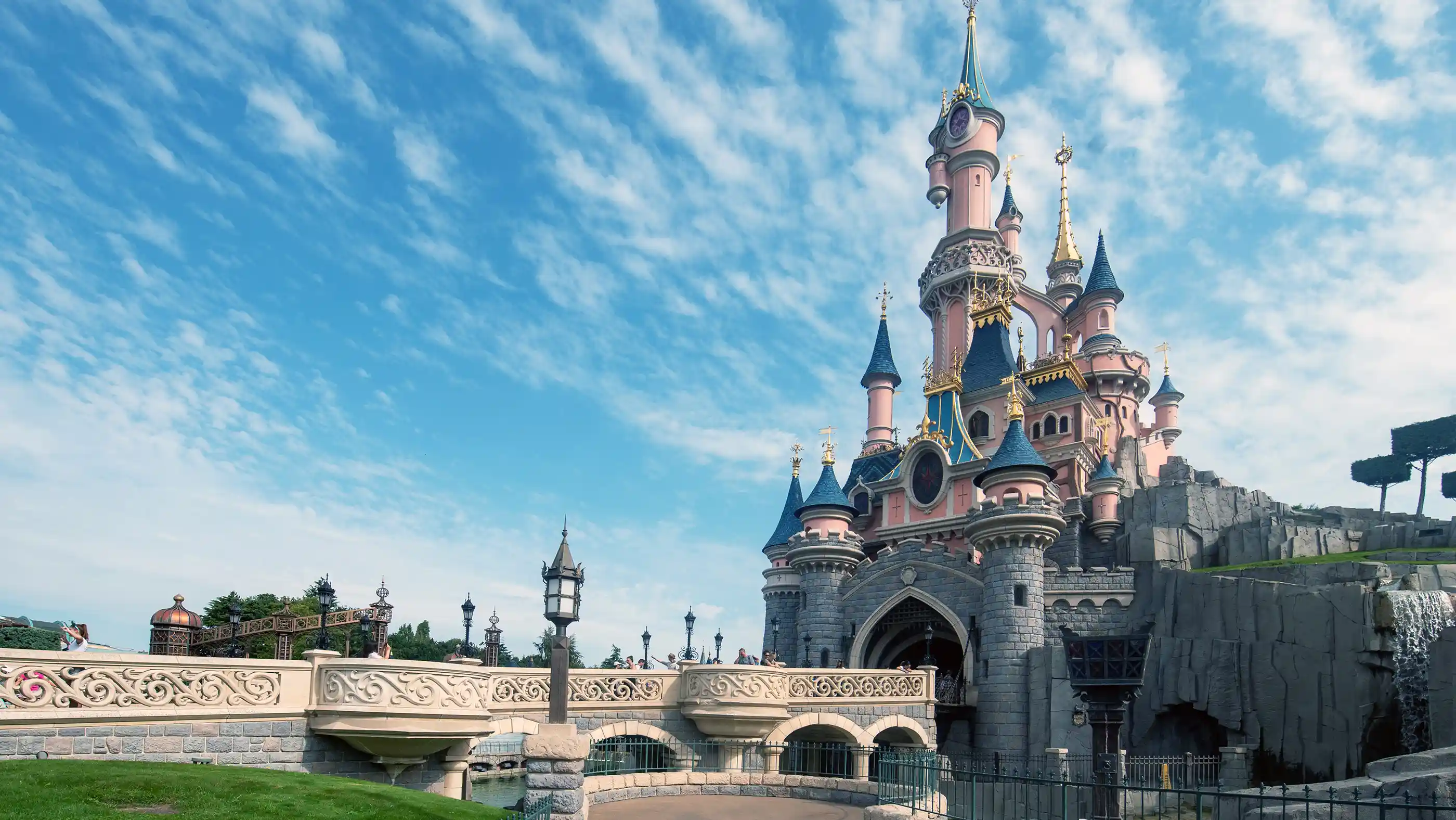
Why Design-Led Software is the Disneyland of User Experience
 Read Time: 4 minutes
Read Time: 4 minutesWhether or not you’re a fan of the Mouse House, there’s no denying the impact Walt Disney’s business approach has had on the world. What can we learn from his methods when it comes to software development?
If you’ve ever been to a Disney theme park, you have experienced some of the best spatial design and strategy known to man. Visitors are led through, not just a series of rides and shops, but an experience. That experience is no accident, and the staggering success of Disney as a company/empire/colossal behemoth testifies to the power of using design as strategy throughout every aspect of your business, from beginning to end. This is particularly true when it comes to undertaking a custom software development project.
What is Design-Led Software Development?
In software, design-led development is an approach where design has a seat at the table from day one, rather than being a coat of paint slapped on at the end. It’s not an afterthought, and it’s not purely aesthetic. It’s a strategic plan of execution that prioritizes understanding user needs, business goals, functionality, and interaction.
Design-led strategy in software development helps to create software that not only solves your problems but does so in a way that’s intuitive and enjoyable for the user. It focuses on creating an attractive user interface (UI) and a seamless user experience (UX), which encapsulates the entire journey a user has with your product or service.
“Weenies” and Primary User Flow
Walt Disney was obsessed with the user experience and ended up trailblazing many of the methods that businesses now consider foundational for engaging their audience.
One example of this is “wayfinding.” Human wayfinding can be defined as “a goal-directed process of determining routes through an unfamiliar environment.” And the importance of designing that process has long been emphasized by scholars such as Kevin Lynch who argued that "it...seems unlikely that there is any mystic ‘instinct’ of wayfinding. Rather there is a consistent use and organization of definite sensory cues from the external environment.”
Disneyland does this by the use of “weenies,” a term coined by Walt himself after noting how his pet dog would follow him anywhere when he was holding a hotdog. A Disney "weenie" is a visual magnet or landmark that draws people towards it—a large, eye-catching structure such as Sleeping Beauty’s Castle or Space Mountain. It’s a design trick that directs flow and movement without making people feel they are being herded.
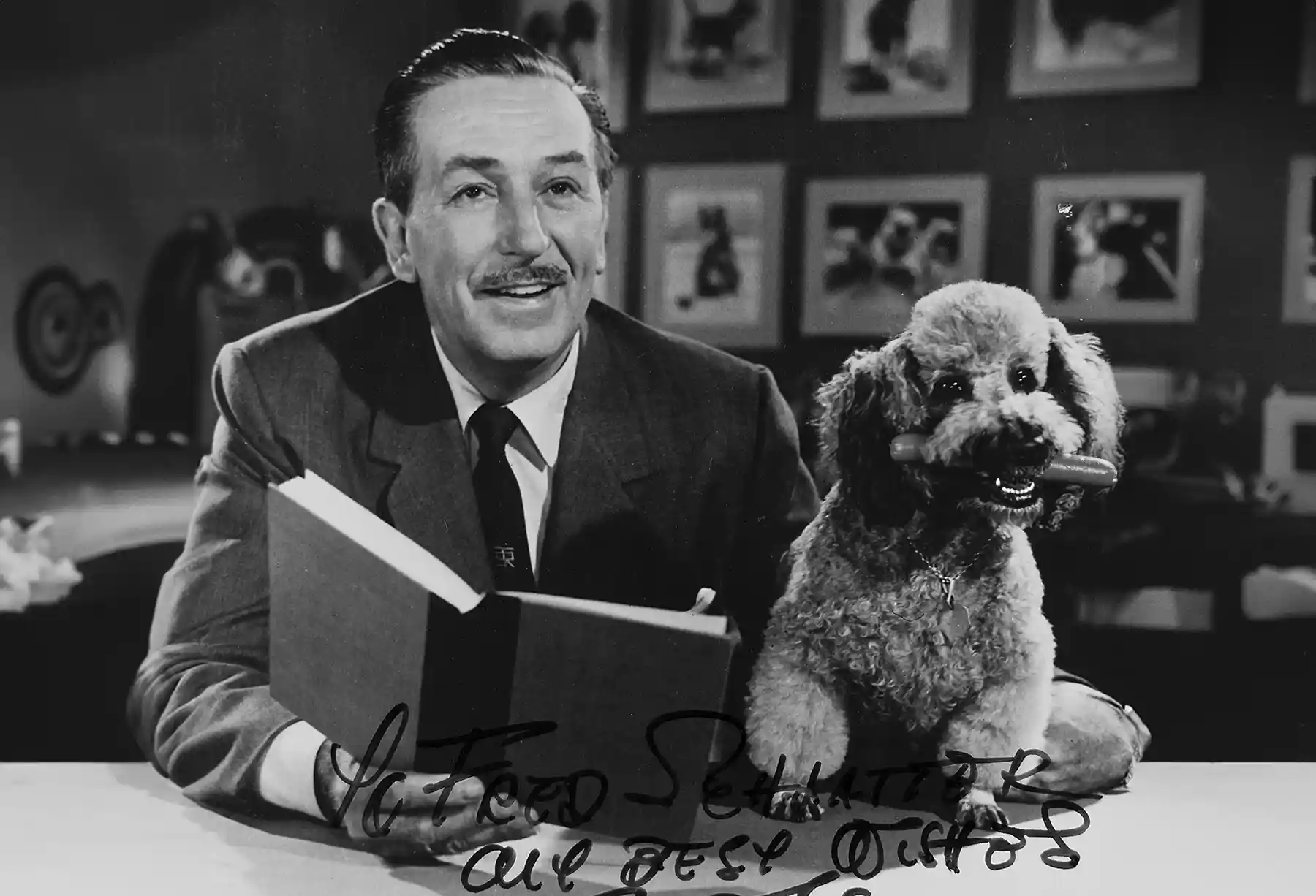
Walt and his dog Lady. The hot dog may be fake, but Lady's love for "weenies" was real.
In software design, “primary user flow” refers to the main path or series of steps users take to accomplish a particular task. Just as "weenies" guide visitors in Disneyland, a well-designed user flow guides users smoothly through the software, ensuring they can achieve their goals with ease and efficiency and making sure they don't get lost or frustrated by giving every function equal real estate.
A well-designed user flow is the backbone of a positive UX. It ensures that the software not only meets functional needs but does so in a manner that's user-friendly and intuitive.
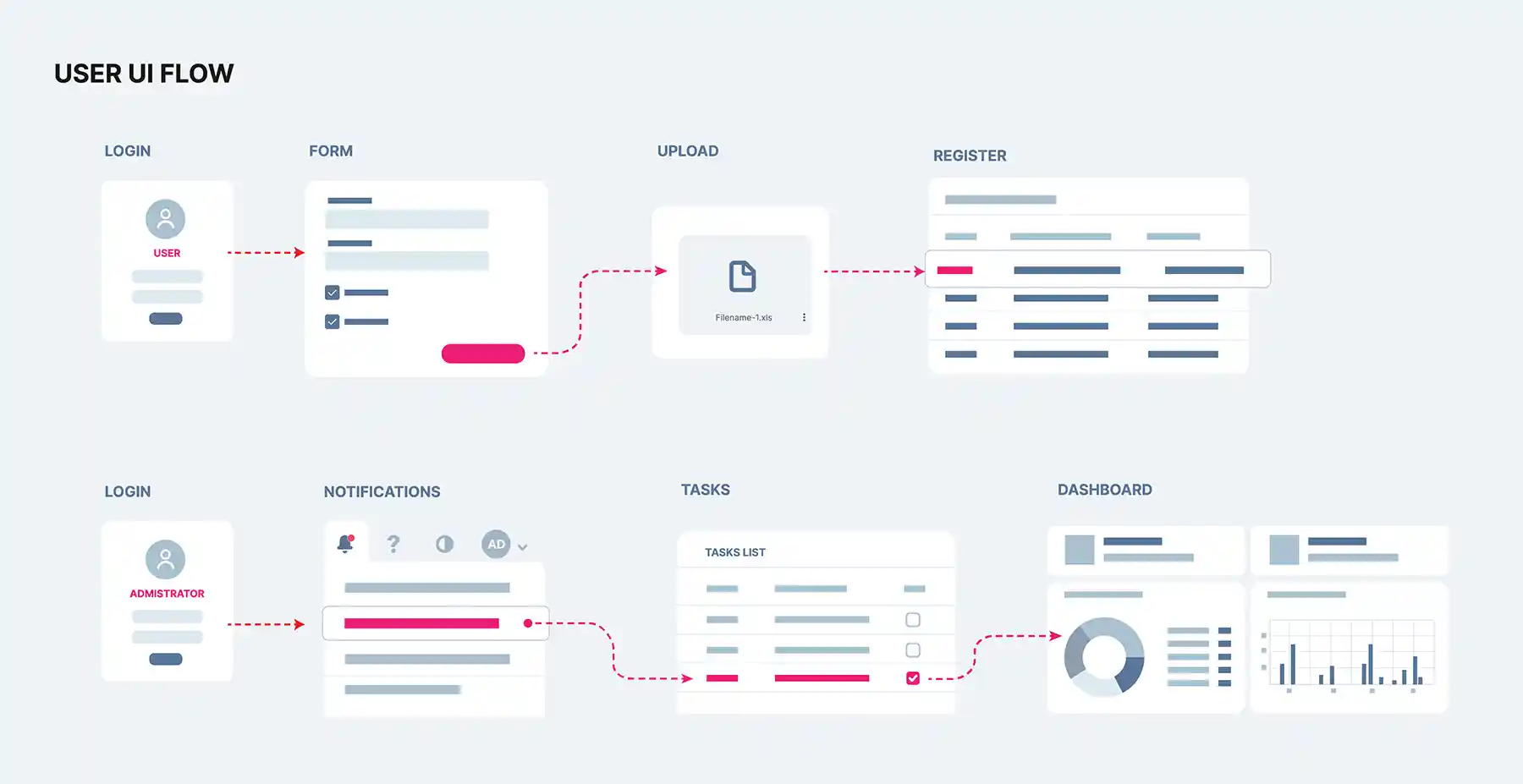
The “Disneyland Walk” and User Validation
Walt often roamed the park incognito, observing guests' reactions, identifying bottlenecks, and looking for areas of improvement. He had friends and family test the rides before they opened to the public, asking for feedback and pain points. He believed in continuous refinement based on real-world observations.
A good software design team will test your product on the end-users early and often. User interviews, surveys, moderated observation, and A/B testing all contribute to building the most successful version of your product. This not only elevates user satisfaction but also optimizes resource allocation, as design and development efforts are directed towards features and enhancements that truly matter. TSG Design Coordinator Aaron Kleid sums this up saying, “It’s cheaper to be wrong early. User testing and validation are what differentiate ‘good’ vs ‘bad’ software of any kind.”
Ice Cream Stands and Data Analytics
Walt was an innovator in data analytics. He would compare foot traffic and sales patterns in the park in order to adjust the placement of ice cream stands and queue configurations.
A good software design team has tools that can monitor and analyze user interactions with your product. These tools provide insights on which features are most used, which paths are taken through the software, and where drop-offs might occur. They offer a grounded, data-driven foundation upon which decisions can be made.
An Orchard in Anaheim and Developers as Engineers
Before buying property for Disneyland, Walt studied factors such as climate, accessibility, and scalability. Once the property was acquired, he needed engineers to transform his vision into reality—people he could trust to give him valuable feedback about concrete details.
When designers are included in a software project from the very beginning, they will study the needs of the users and stakeholders. Like Walt with his engineers, they will collaborate tightly with software developers, helping to build a core statement and figure out major features, while continuously integrating feedback back and forth. Kleid explains, “When we say design-led, that doesn't mean design first. It’s a collaborative process of applying strategic thought to how we build things throughout the process. Developers are essential to building something that is actually possible and on budget.”
Walt’s engineers brought his ideas into the real world, but without his design strategy, Sleeping Beauty’s Castle might have ended up at the back of the park, or the ride queues could have all started in the same area, creating a confusing mass of bodies in one place. These aren’t issues that could be fixed after the engineers had built the main elements; everything needed to be strategically designed from the very beginning.
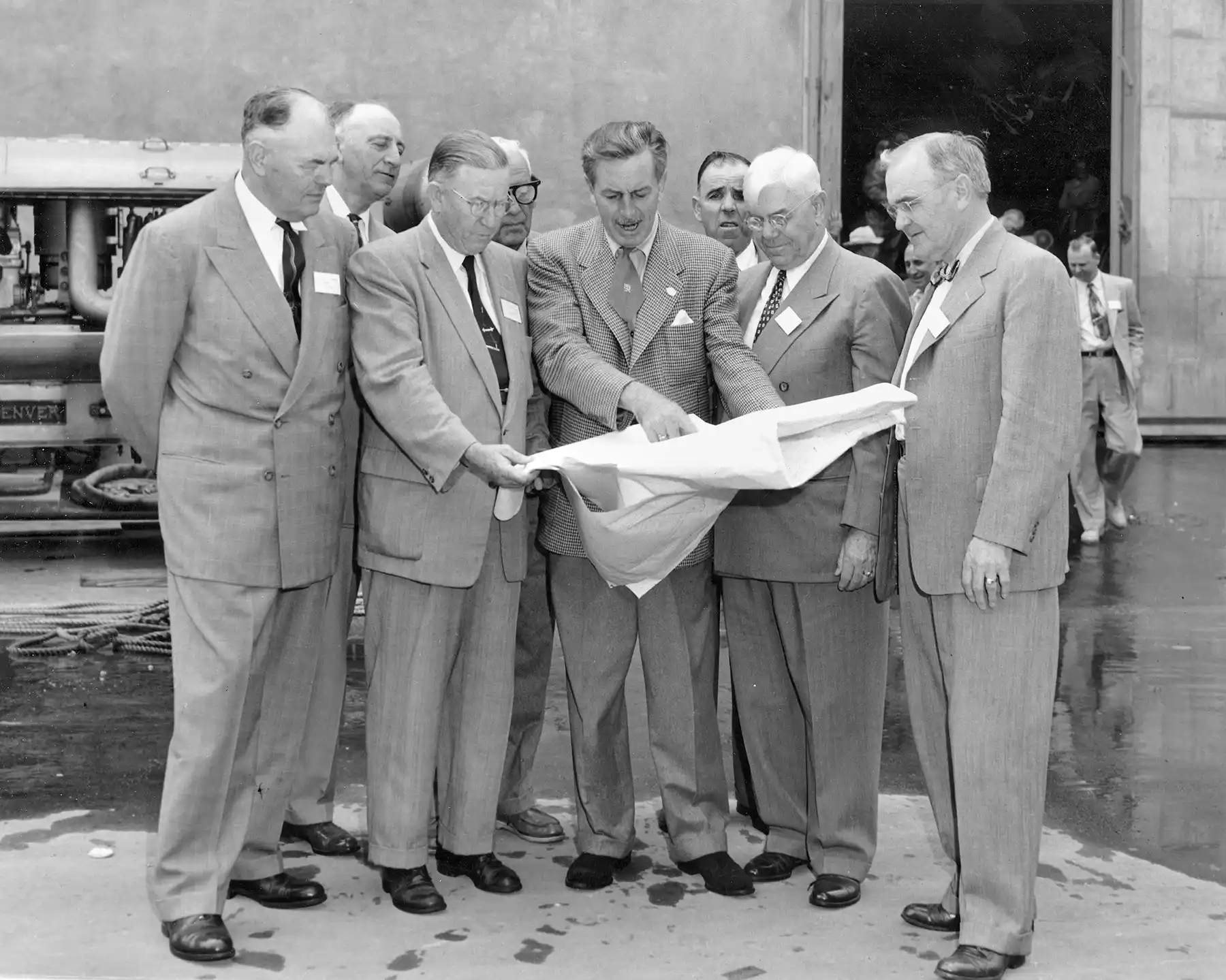
Photo courtesy of Orange County Archives.
Redefining Design
Walt Disney has been called many things throughout the years, but rarely is he referred to as a Designer, despite being the foremost designer of several of the most successful business enterprises of our modern age. Perhaps this is because many people don’t realize that the role of designers extends far beyond simple aesthetics. A designer’s involvement from inception to completion is pivotal in shaping a product that is not just visually appealing but also functional, intuitive, and aligned with user needs.
Software designers dive deep into understanding the core objectives, challenges, and opportunities of a software project, ensuring every decision is informed and purposeful. They don't merely "make things pretty" at the end; they infuse a project with strategic insights, innovative solutions, and user-centric perspectives throughout its lifecycle.
Continuous collaboration between designers, developers, stakeholders, and users ensures that software isn't just built; rather, it is crafted with precision, foresight, and a deep commitment to excellence. When designers are integrated throughout the software development process, the end product stands as a testament to the profound impact of design-led thinking.
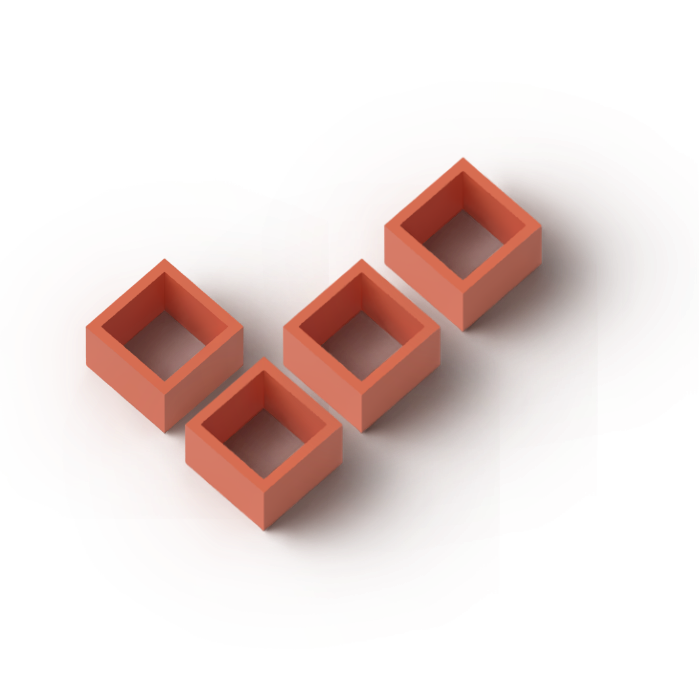
We are custom software experts that solve.
From growth-stage startups to large corporations, our talented team of experts create lasting results for even the toughest business problems by identifying root issues and strategizing practical solutions. We don’t just build—we build the optimal solution.
From growth-stage startups to large corporations, our talented team of experts create lasting results for even the toughest business problems by identifying root issues and strategizing practical solutions. We don’t just build—we build the optimal solution.
